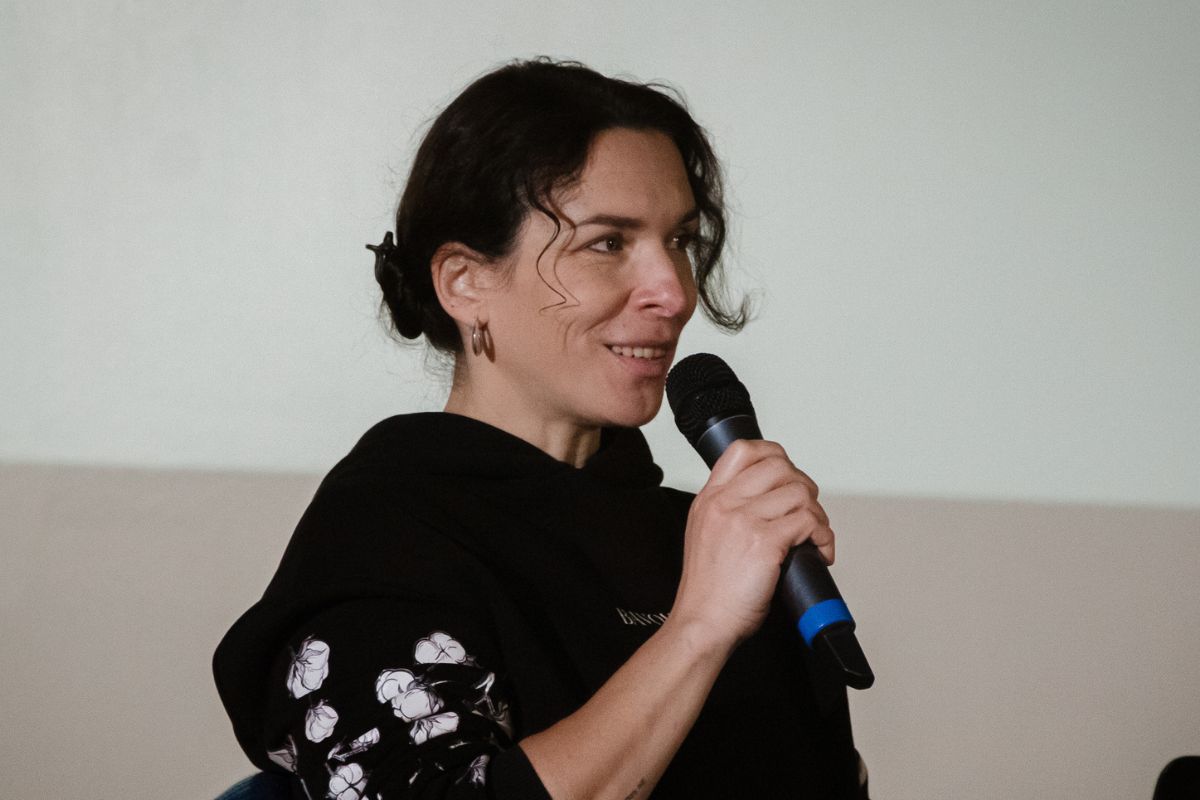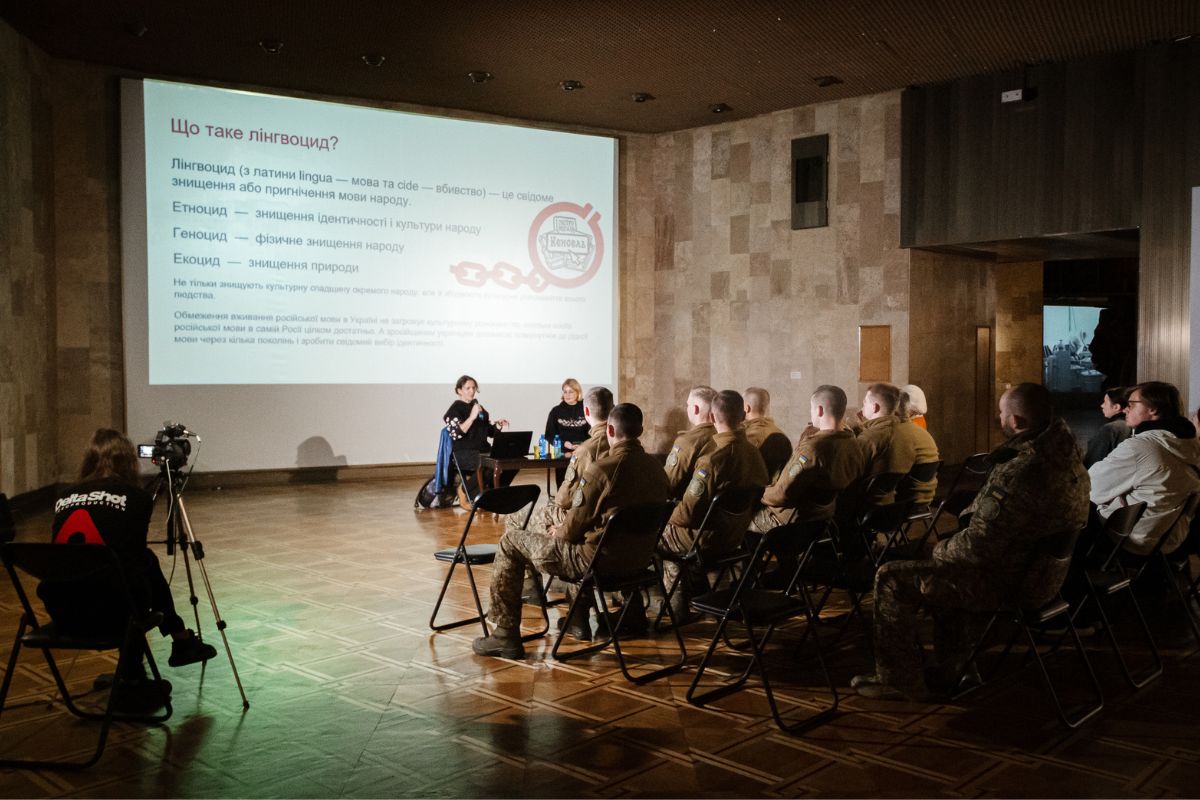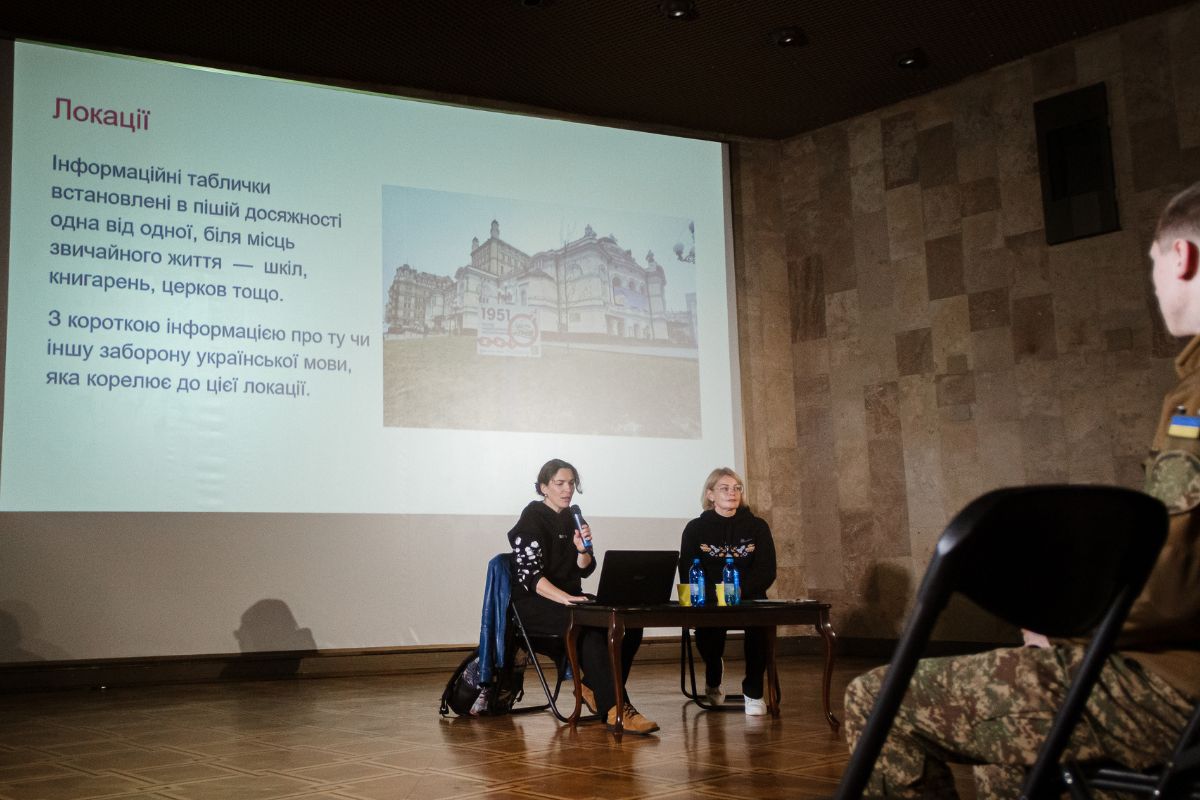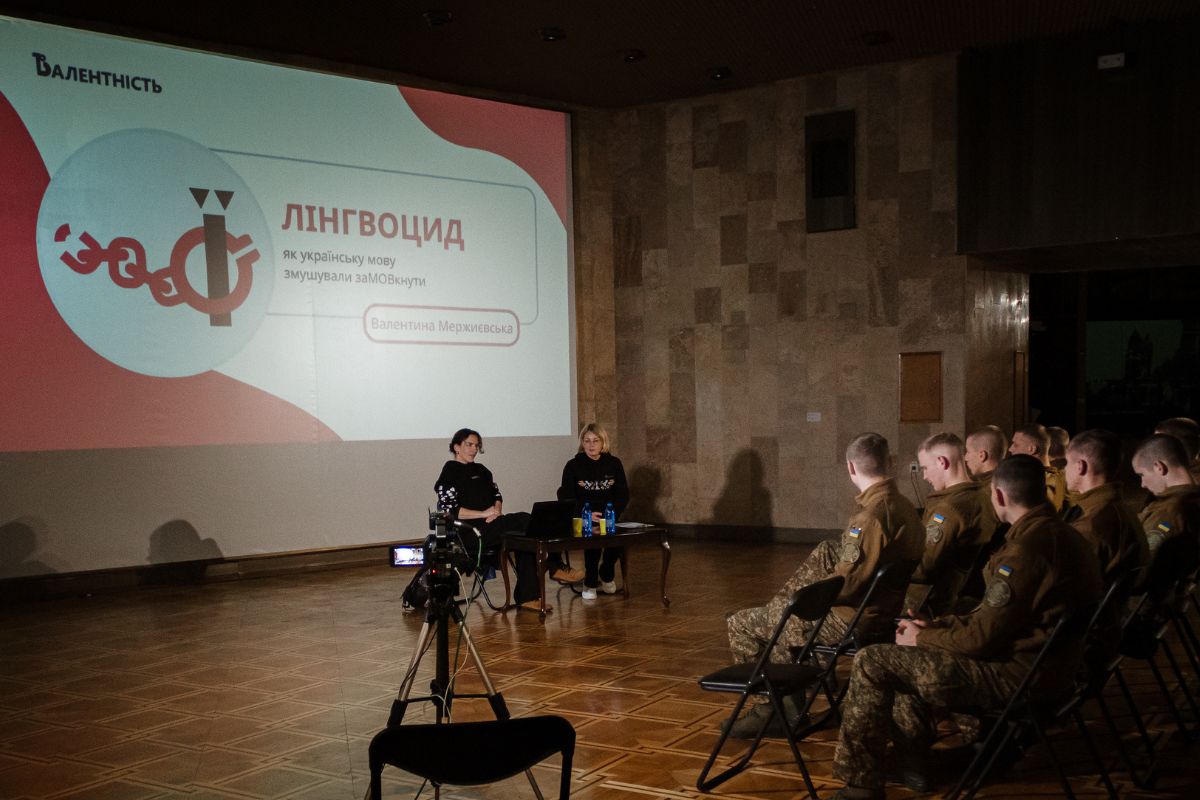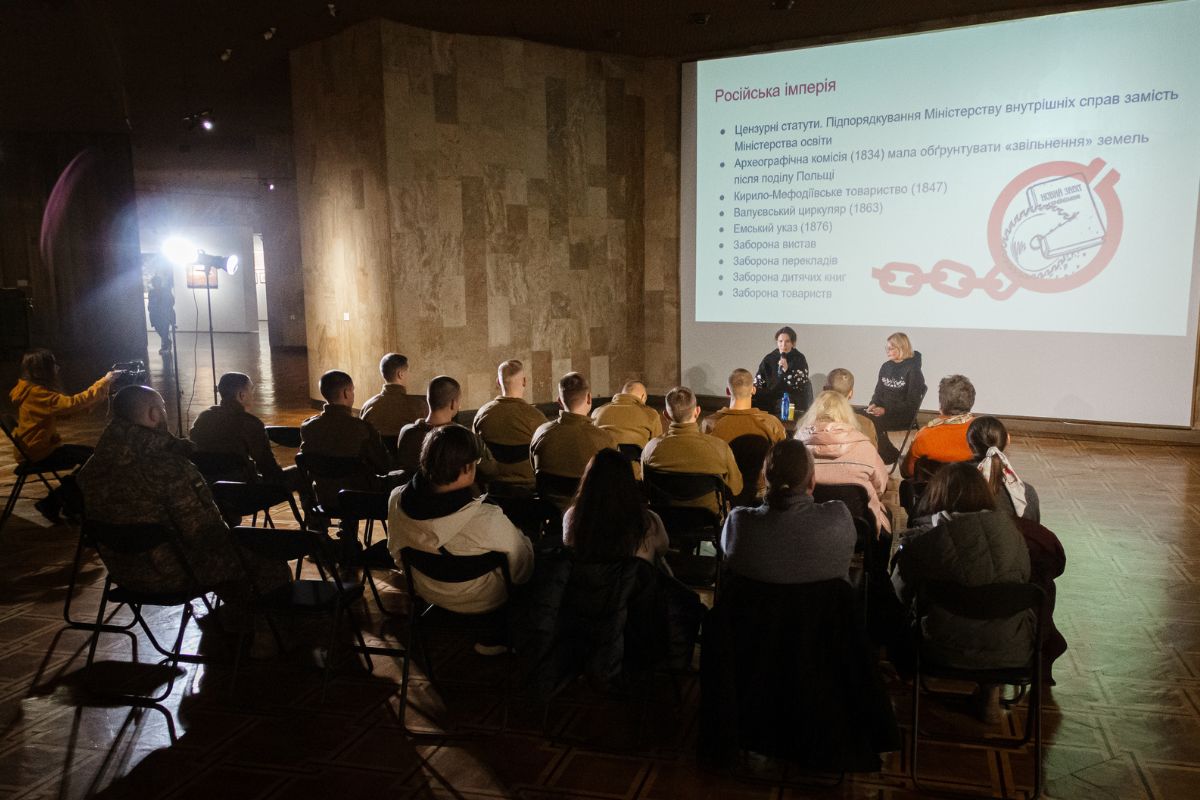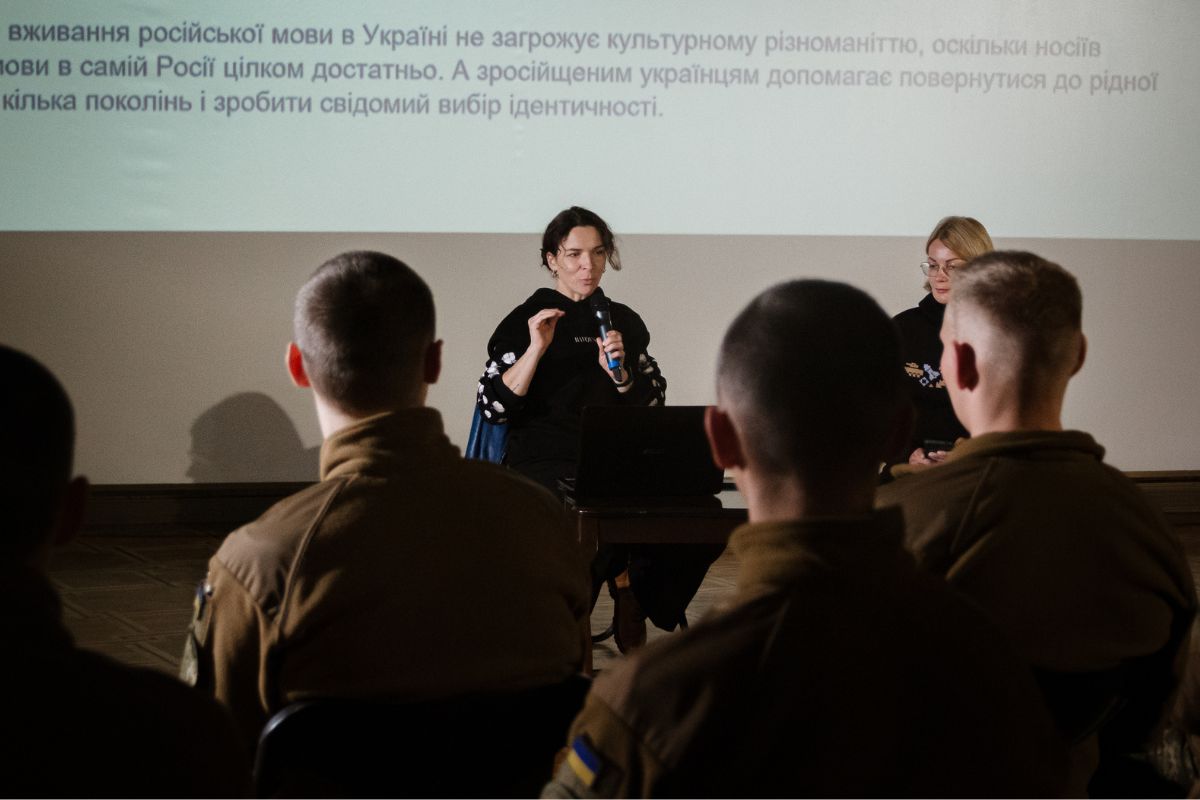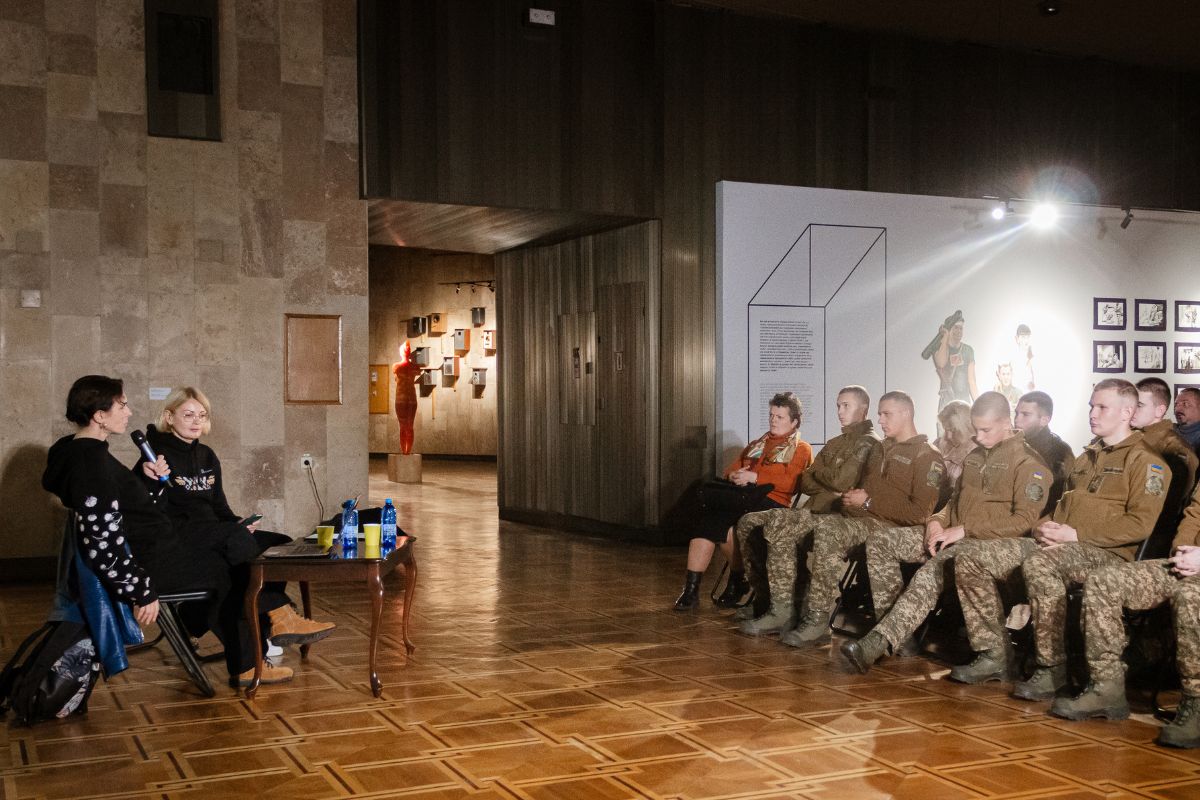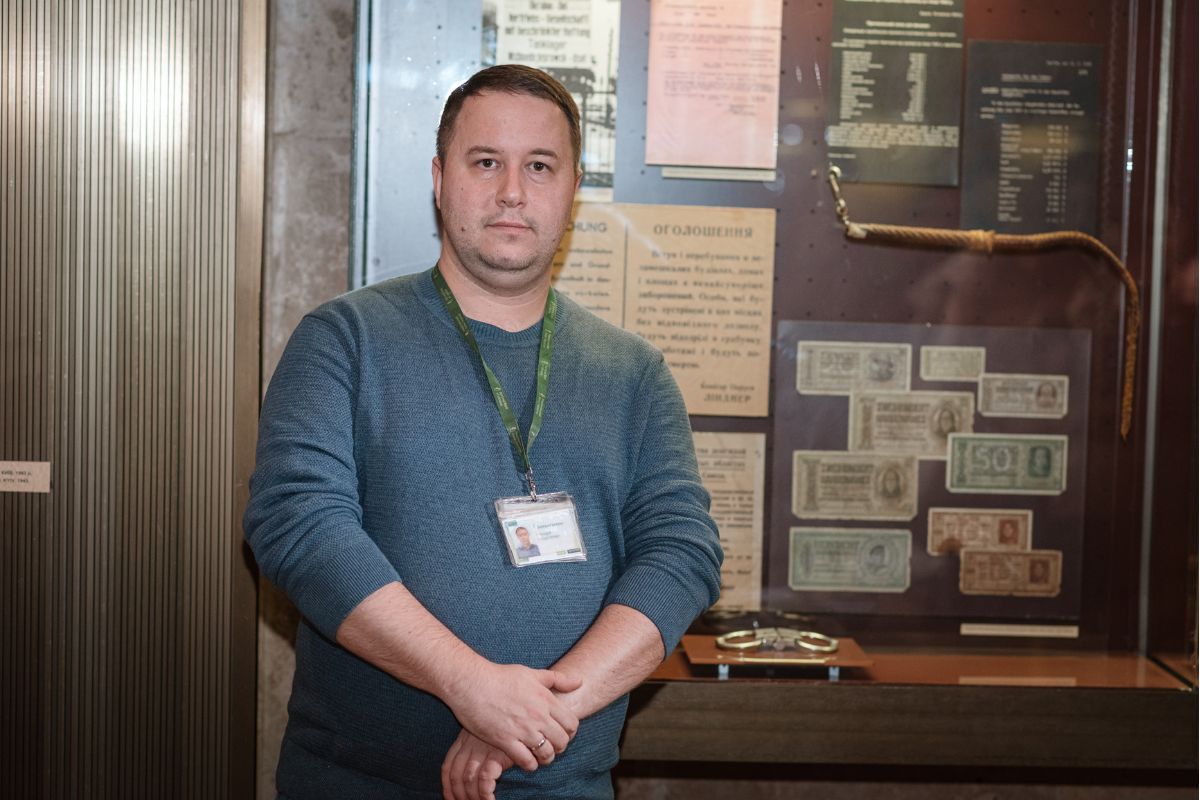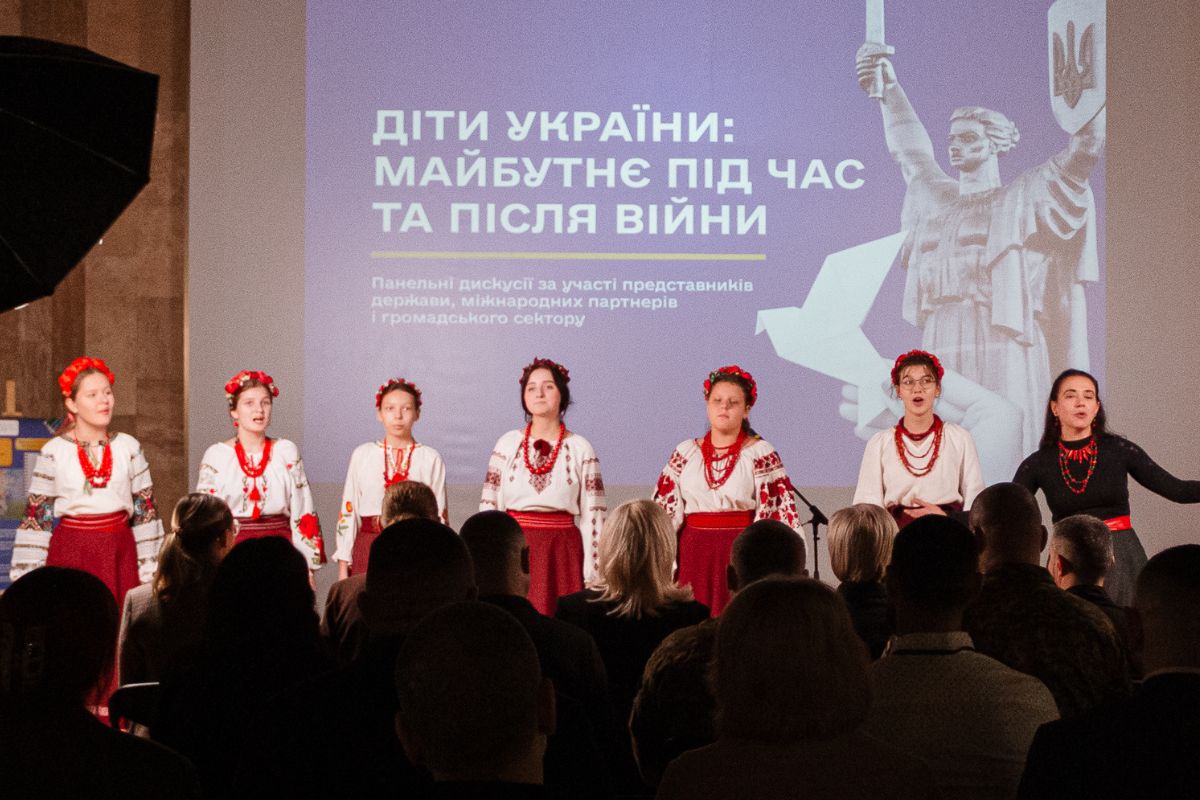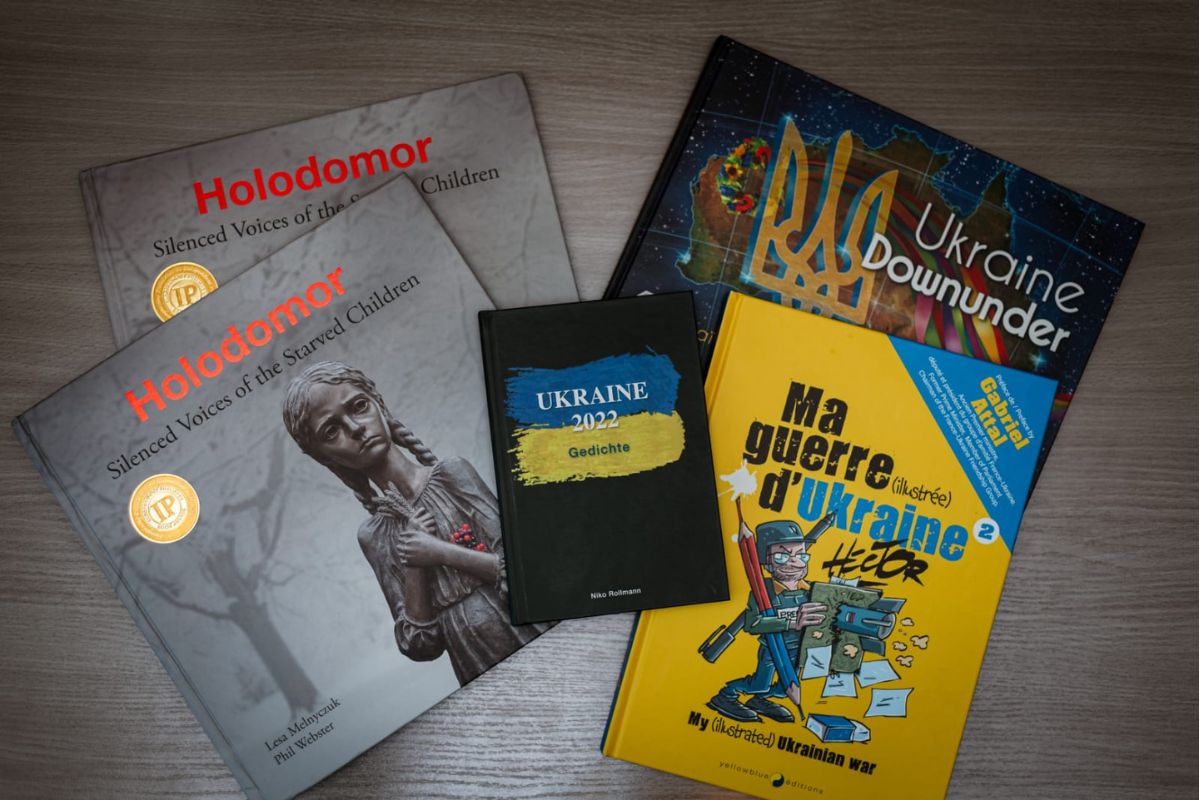On the occasion of the Day of Ukrainian Literature and Language, the War Museum hosted the presentation of the educational project “Linguocide.” The project’s author, educator, and co-founder of the NGO “Valentnist. Rethinking” Valentyna Merzhyievska, introduced the history and concept of the initiative, which explores and illustrates the policy of russification and the suppression of the Ukrainian language from the 17th century to the present day.
Linguocide is an interactive memorial that allows the public to immerse themselves in the history of Russia’s Russification policy. The project includes plaques with QR codes that enable users to:
-
install a mobile application;
-
follow a specially designed route;
-
read historical descriptions;
-
listen to audio commentary;
-
explore locations connected to documented acts of linguocide.
Thus, the history of linguocide does not remain abstract — it is literally embedded into the urban landscape. As of today, the project includes 38 plaques.
The initiative was launched in 2022 as part of the Mediengeist counter-disinformation program. It was implemented by the NGO Valentnist. Rethinking with the support of the Goethe-Institut in Ukraine and Kunsht magazine.
During the presentation, Valentyna also spoke about the very phenomenon of linguocide, which Ukrainians have endured for centuries — the deliberate eradication of language as a core element of national identity.
She guided the participants through four centuries of Ukrainian language suppression, highlighting the specific features of linguocide policies in each historical period.
Already during the period of the russian Empire, the Ukrainian language became the target of systematic repression. Imperial policy aimed to ban the printing of Ukrainian-language religious books, destroy libraries, pressure the Kyiv-Mohyla Academy, and suppress Ukrainian education. Later came the Valuev Circular of 1863 and the Ems Ukaz of 1876, which prohibited the publication of books, theatrical performances, translations, and children’s literature in Ukrainian. Church services were forced to be conducted “in a voice characteristic of the russian dialect.”
The communists who came to power replaced direct bans with a controlled language policy. A brief period of “Ukrainization” was followed by mass repressions and gradual russification. The russian language became the language of state institutions and a prerequisite for career advancement.
Today, russia uses the so-called “protection of russian-speaking populations” as a pretext for invasion, framing the consequences of its own colonial policies as justification for aggression. “However, the majority of russian-speaking Ukrainians are not russians, but Ukrainians who were forcibly russified. This is not a coincidence — it is the result of a systemic policy,” Valentyna emphasized.
The speaker emphasized that supporting the Ukrainian language at the state level means returning to one’s roots, restoring historical continuity, and making a conscious choice of identity.
Highlighting that the russification of Ukrainians lasted for more than four centuries and affected around 15 generations, Valentyna stressed the importance of spreading more information, particularly about the history of the Ukrainian language and its suppression. Both Ukrainians and the global community need to understand the roots of russification and its long-term consequences, as well as recognize that the Ukrainian language today is one of the key tools in countering russian propaganda.
